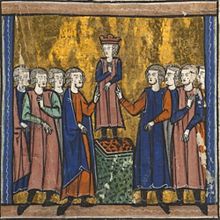Recently I received Suetonius’ Lives of the Twelve Caesars, and it reads like a gossip magazine. Poison! Intrigue! Murder! By the end of the exposé on Nero, I was wondering how such a loony rose to power in the first place.
If my opinion of Nero was built entirely upon Suetonius, it would be very disproportionate. The writer had his own agenda. His own biases. And thousands of years later, here I am, innocently lapping it up.
In order to understand an event, it’s necessary to consider different perspectives, weighing their beliefs and prejudices. This is especially difficult with contemporary accounts, also known as primary sources.
I first heard this from my history teacher, Mrs. Smith*. She explained that different people have different perspectives on the same event, and to demonstrate she invited two eyewitnesses of 1981 Springbok Tour to take questions from the class.
But first, a bit of background.
During the 1980s, South Africa was in the grip of apartheid--a regime so cruel that the international community decided to exclude it. New Zealand, however, wasn’t too keen on the idea. Kiwis and Afrikaans had developed a friendly rugby rivalry that thrilled fans on both sides. Ostracizing South Africa would mean an end to that. “And anyway,” some argued, “politics shouldn’t interfere with sport.”
Thus armed, the New Zealand Rugby Football Union arranged for the South African team, the Springboks, to visit their country for a 16-game tour. Rugby fans rejoiced--but not everybody shared their enthusiasm. Human rights activists called it an outrage. In their opinion, fraternizing with the Afrikaans was immoral, as well as damaging to New Zealand’s image. Thousands took to the streets in protest--Ms. Smith’s first witness was one of them.
His name was Mr. Johnson*. He was tall, tan and wore a life preserver. Upon entering the classroom he started bellowing an old protestors’ chant: ONE, TWO, THREE, FOUR! WE DON’T WANT YOUR RACIST TOUR! FIVE, SIX, SEVEN, EIGHT! STOP THE TOUR, IT’S NOT TOO LATE!
I jerked back in my seat. That was loud. To make matters worse, Mr. Johnson started drumming on a trashcan lid, which he had been carrying like shield. The class was transfixed. What the heck was going on?
Mr. Johnson explained that the life preserver and trashcan lid were a homemade suit of armor for protection against the riot police. They weren’t afraid to use violence. Cops marched into huddles of protestors, swinging long-batons and hollering, “MOVE. MOVE. MOVE.” Mr. Johnson demonstrated with a baseball bat to make sure we got the idea.
Once I recovered from my initial shock, I was enraptured by the interview. Mr. Johnson was a terrific speaker--made the protest sound like a crusade against racism. The police became mindless henchmen, Nelson Mandela was their figurehead, and martyrs emerged from the riots.
But Mrs. Smith wasn’t done yet. She still had one witness left--a policeman who spent the Tour fighting people like Mr. Johnson. Unfortunately he passed away a few years ago, so we had to watch a taped interview with another class.
The policeman was quiet. Gravelly. Morbid. He reminded me of an old war veteran. While Mr. Johnson spoke in terms of moral duty, the policeman acted as though he were dispelling a myth, turning the Springbok Tour into a cautionary tale.
Turns out, the protestors gave as good as they got. Property was destroyed. Cops were bashed. The policeman labeled most of the activists as hypocrites, recalling a priest whom he had seen babbling prayers and spreading glass on a rugby pitch. After that, the policeman’s faith in the Church was shattered. My own anti-tour sympathies collapsed altogether.
Which side was right? I wasn’t sure. Previously I had assumed that the protesters were good because they were against racism, but the police had some valid points too. I couldn’t just brush them aside.
My eventual conclusion was that nobody was completely right. The protestors shouldn’t have hit the police and the police shouldn’t have hit the protestors. That was a much more mature opinion than the one I’d held previously. Both sides of the argument were needed to balance it.
So next time you’re examining a primary source--be it neighborhood gossip or Suetonius’ biography of Nero--try playing devil’s advocate. What would the opposition say? What is the author’s motivation? Suetonius, for example, wanted to sell his book. Mr. Johnson and the policeman may feel the need to justify their actions, although that’s not a bad thing. Perspective is an instinct. It slips in, unnoticed, and skews the world in our favor.
You can try now, if you want. Below I have shared two taped interviews with eyewitnesses to the Springbok Tour. Compare, contrast, and let me know what you think!
An interview with a member of the Blue Squad (riot police)
Perspectives from a former rugby player and Marx Jones, a man who rented an aeroplane and lobbed flour bombs into a stadium to protest the Springbok Tour.
*Stalkers should note that names have been changed to protect the innocent.





























